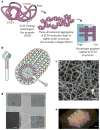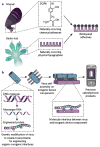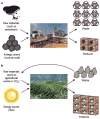Inspiration and application in the evolution of biomaterials
- PMID: 19940912
- PMCID: PMC2848528
- DOI: 10.1038/nature08601
Inspiration and application in the evolution of biomaterials
Abstract
Biomaterials, traditionally defined as materials used in medical devices, have been used since antiquity, but recently their degree of sophistication has increased significantly. Biomaterials made today are routinely information rich and incorporate biologically active components derived from nature. In the future, biomaterials will assume an even greater role in medicine and will find use in a wide variety of non-medical applications through biologically inspired design and incorporation of dynamic behaviour.
Figures






References
-
- Ratner BD, Bryant SJ. Biomaterials: where we have been and where we are going. Annu Rev Biomed Eng. 2004;6:41–75. This is an excellent, comprehensive review of the history of the biomaterials field. - PubMed
-
- Mroz T, Yamashita T, Lieberman I. The on- and off-label use of rhBMP-2 (INFUSE) in Medicare and non-Medicare patients. Spine J. 2008;8:41S–42S.
-
- Shahani S. Advanced Drug Delivery Systems: New Developments, New Technologies Report No. PHM006F. Business Communications Company; 2006.
-
- King RG, Donohue GF. Estimates of medical device spending in the United States. AMSA; 2007. < http://www.amsa.org/AMSA/libraries/committee_docs/king_paper_medical_dev...>.
Publication types
MeSH terms
Substances
Grants and funding
LinkOut - more resources
Full Text Sources
Other Literature Sources

